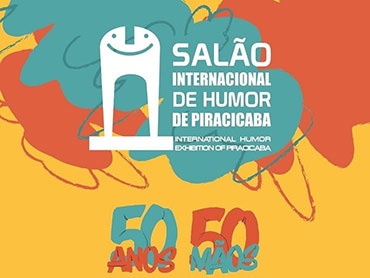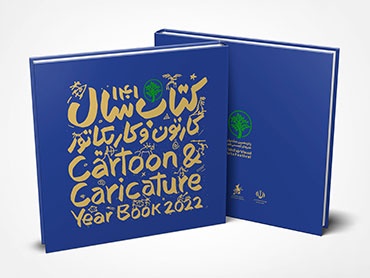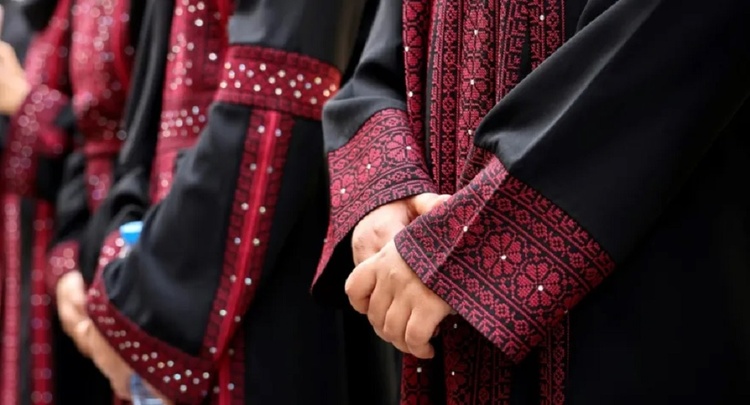
Gaza Artist Embroiders the 'Pain' of War in Paris
"Before the war, I used to embroider for happy occasions, but today I sew my pain," says Maha al Daya, needle and thread in hand, as news from Gaza echoes in the background of her Paris studio.
Daya, her husband, and their three children—ages 8, 15, and 18—are among the hundreds of Palestinians who received visas to France after the war in Gaza began in October 2023.
Stitch by stitch, this 41-year-old artist embroiders the traces of the conflict. On opaque materials, she writes messages in Arabic with black wool thread, such as "Stop the Genocide," or marks the devastated areas on a map of Gaza with red lines.
For more than 21 months, Israel has been carrying out a devastating offensive in this Palestinian territory in retaliation for the Islamist movement Hamas's attack on Israeli soil on October 7, 2023. The Palestinian commando's action resulted in the deaths of 1,219 people, most of them civilians, according to an AFP count based on official Israeli data.
In Gaza, with its two million inhabitants mired in a humanitarian disaster, Israeli operations left more than 59,000 people dead, most of them civilians, according to data from the Gaza Health Ministry, considered reliable by the UN.
- From Wedding to War -
For centuries, Palestinians have sewn long black dresses adorned with bright red embroidery that are still worn in rural areas, at weddings and other celebrations.
Daya now uses this technique to denounce the suffering of her two million compatriots in the face of Israel's air and ground offensive.
In April, the artist was able to show her work to French President Emmanuel Macron during an exhibition at the Institut du Monde Arabe in Paris.
She presented him with an embroidery with the words: "Where will we go now?"
"Everyone says that because we're being displaced all the time," Daya explains.
"Just a few days"
She and her family lived through the first six months of the conflict in the Gaza Strip before managing to escape the Palestinian territory.
A few days after the war began, Daya fled her home in Gaza City with only a few clothes in backpacks.
"I thought, 'It's just for a few days, we'll come back,'" she recalls now. "We had no idea it would last so long."
The family found shelter with friends of a nephew in the southern city of Khan Yunis. They didn't know them, but they were incredibly kind, she explains.
But in mid-December 2023, a bombing hit the house. Two of her nephews were seriously injured. One of them had to have a limb amputated.
The family moved into a tent, where they lived for four months. "The cold was unbearable. In winter, the rain would pour down into the house," she says.
They then heard from a Cairo-based agency that she could put their names on a list so they could leave the territory through the border crossing between southern Gaza and Egypt for a fee of $4,000 (R$22,200 at the current exchange rate) per person.
A Bethlehem artist raised funds to pay this amount in exchange for future creations by her and her husband, also an artist.
- "It's hard to find peace" -
In Cairo, she began embroidering, and her husband picked up his paintbrushes again. "We were like birds freed from their cage," she explains.
A charity created to help Gazan artists, called Maan, helped her apply for a French government program for vulnerable artists and researchers.
Her application was accepted by Sciences Po University and the Paris branch of Columbia University in New York.
After nine months in Egypt, the family landed in Paris.
Daya began taking French lessons in the morning and embroidery in the afternoon. In the evenings, she returns to her family in the university residence where they live.
Her children have returned to school.
"When I arrived here, I was happy," she says. "But at the same time, there's a kind of pain inside. While there's still war there, while people are still dying, it's hard to find peace."
Source

- December 10, 2025
Creatures | Book of Paintings Le Yamaura
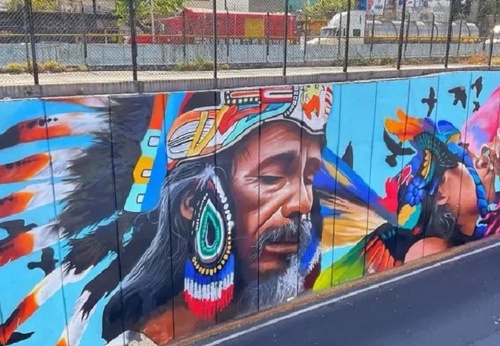
- December 10, 2025
The Power of Graffiti in Mexico: Identity, Resistance, and the City
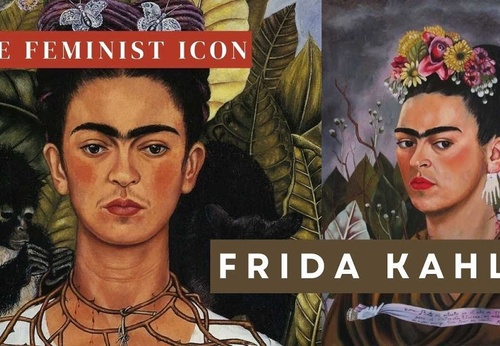
- December 10, 2025
Pioneering Women of Latin American Art: From Frida Kahlo to Lygia Clark
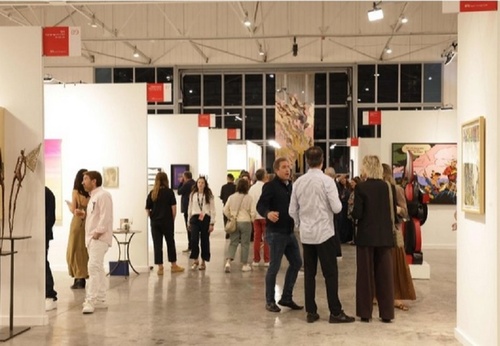
- December 10, 2025
Pinta Miami 2025 Reaffirms the Strength of the Latin American Art Market
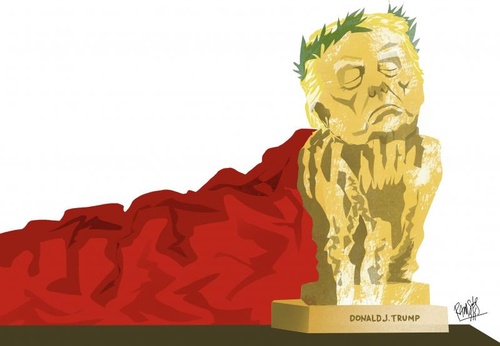
- December 10, 2025
The sleeping emperor
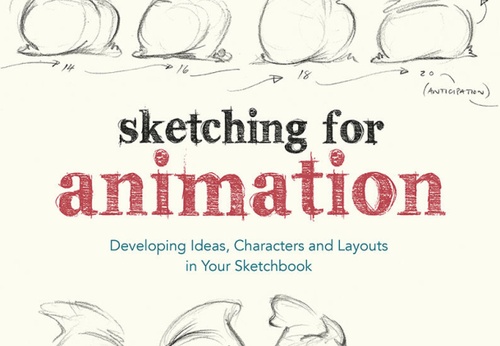

- December 10, 2025
Javier Bahamonde - Chile

- December 09, 2025
African coups


- December 10, 2025
Pinta Miami 2025 Reaffirms the Strength…

- December 09, 2025
“GENOCIDE” Exhibition and Controversy O…

- December 09, 2025
Indigo Celebrates its 21st Anniversary …

- December 07, 2025
7 Art and Culture Recommendations for T…

- December 07, 2025
Why is Frida Kahlo the woman with the m…

- December 06, 2025
Argentine Art Makes a Grand Entrance at…

- December 06, 2025
Pinta Miami Highlights Sustainable Lati…

- December 04, 2025
Pinta Miami 2025: Epicenter of Contempo…

- December 03, 2025
Pinta Miami Boosts Latin American Art

- December 02, 2025
Exhibition “Unspeakable Gestures,” by A…

- December 02, 2025
Malba: “Pop Brasil” is an essential exh…

- December 01, 2025
Key Fair for Contemporary Latin America…

- December 01, 2025
Unseen Renoir work resurfaces after a c…

- November 30, 2025
How Brazilian Pop Art Challenged the Di…

- November 30, 2025
Palestinian Artist Transforms War Rubbl…

- November 29, 2025
Latin America's Most Important Craft Fa…

- November 29, 2025
Miami, with a Latin rhythm: the region'…

- November 26, 2025
Frida Kahlo Breaks World Auction Record

- November 23, 2025
Latin American Abstract Painting: From …

- November 23, 2025
Pinta Miami Celebrates 19 Years of Lati…

- October 08, 2023
Illustrations reflect the brutal Israel…

- December 25, 2023
The jury statement of the Iran-Brazil F…

- March 21, 2024
The history of art in Palestine

- July 29, 2023
History of Caricature in Brazil

- September 01, 2023
Neural Filters in new photoshop 2023

- April 20, 2024
Poignant Image of Grief Wins Mohammed S…

- May 22, 2025
Brady Izquierdo’s Personal Exhibition O…

- June 29, 2024
Exhibition at Centro MariAntonia contra…

- October 21, 2023
Erick Meyenberg and Tania Ragasol at th…

- May 15, 2024
Eleven murals for Gaza painted across t…

- February 18, 2024
7 Ways to Understand What Visual Arts A…

- March 14, 2024
museum of statue of van gogh

- March 30, 2024
illustration websites in Latin America

- May 25, 2025
Bordalo II to hold exhibition in Paris …

- May 20, 2024
Latin American Festival of Performing A…

- March 15, 2024
museum of sculpture of Salvador Dali

- August 09, 2023
Venezuela mural expresses solidarity wi…

- October 23, 2023
Photos by José Luis Díaz of the march o…

- May 27, 2025
Works by Botero, Grau, and 80 other imp…

- January 23, 2025
Art Palm Beach 2025

- May 15, 2024
Eleven murals for Gaza painted across t…

- February 18, 2024
7 Ways to Understand What Visual Arts A…

- January 02, 2025
13 commemorations that will mark the cu…

- October 17, 2023
The influence of Latin American artists…

- February 03, 2024
THE HISTORY OF NAIF ART

- July 02, 2024
One of the largest urban art galleries …

- October 08, 2023
Illustrations reflect the brutal Israel…

- November 17, 2023
Fernando Botero's work is booming after…

- July 29, 2023
Piracicaba International Humor Exhibiti…

- November 06, 2023
Heba Zagout: Palestinian artist murdere…

- December 25, 2023
The jury statement of the Iran-Brazil F…

- December 10, 2023
Sliman Mansour and Palestinian art on t…

- March 14, 2024
museum of statue of van gogh

- February 01, 2025
A maior exposição de Botero em Barcelona

- March 21, 2024
The history of art in Palestine

- July 20, 2024
First International Mail Art Biennial 2…

- April 20, 2024
Poignant Image of Grief Wins Mohammed S…

- October 30, 2023
Palestinian turns images of the Gaza co…

- September 01, 2023
Neural Filters in new photoshop 2023

- February 08, 2024

